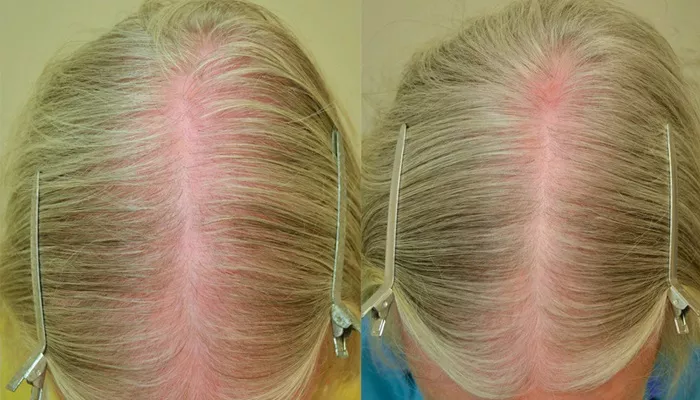Hair transplant surgery is a significant step towards achieving a fuller head of hair. Post-surgery, maintaining and enhancing the results often requires additional treatments. Finasteride, a medication known for its effectiveness in treating male pattern baldness, is commonly recommended. This article will explore how long you should take finasteride after a hair transplant, its benefits, potential side effects, and other essential considerations.
Understanding Finasteride
Finasteride is a medication that inhibits the conversion of testosterone to dihydrotestosterone (DHT). DHT is a hormone that contributes to hair loss in men by shrinking hair follicles. By reducing DHT levels, finasteride helps to slow hair loss and promote hair regrowth.
Importance of Finasteride Post-Hair Transplant
After a hair transplant, the newly transplanted hair follicles need a conducive environment to thrive. While the transplanted hair is generally resistant to DHT, the existing hair on your scalp remains vulnerable. Finasteride helps protect this existing hair, preventing further hair loss and ensuring a more uniform appearance.
How Long Should You Take Finasteride After Hair Transplant?
The duration for which you should take finasteride after a hair transplant can vary based on individual circumstances. However, most hair transplant surgeons recommend continuing the medication indefinitely. Here’s why:
1. Protecting Native Hair
Your native hair, which is still susceptible to DHT, needs continuous protection. Stopping finasteride may lead to a resurgence in hair loss of the native hair, undermining the overall results of the transplant.
2. Maintaining Results
Consistent use of finasteride helps maintain the density and appearance of your hair. Discontinuing the medication can result in gradual thinning and loss, negatively impacting the aesthetic outcomes achieved through the transplant.
3. Preventing Future Hair Loss
Hair loss is a progressive condition. Even after a successful transplant, new areas may become susceptible to DHT over time. Finasteride serves as a preventive measure, reducing the risk of future hair loss and the need for additional transplants.
Starting Finasteride After Hair Transplant
It’s essential to discuss the timing and dosage of finasteride with your hair transplant surgeon. Generally, you may begin taking finasteride a few days to a week after the surgery. The standard dosage is 1 mg per day, but your doctor may adjust this based on your specific needs.
Evaluating the Effectiveness of Finasteride
Regular follow-ups with your doctor are crucial to monitor the effectiveness of finasteride. Here are some signs that the medication is working:
Reduced Hair Shedding
A noticeable decrease in hair shedding within the first few months indicates that finasteride is helping to stabilize hair loss.
Improved Hair Density
Over time, you may observe an increase in hair density, particularly in areas that were thinning before the transplant.
Slower Progression of Hair Loss
Continued use of finasteride should result in a slower progression of hair loss, maintaining the overall appearance of your hair.
Potential Side Effects of Finasteride
While finasteride is generally well-tolerated, it’s essential to be aware of potential side effects. Common side effects include:
Decreased libido
Erectile dysfunction
Ejaculation disorders
Breast tenderness or enlargement
These side effects are typically rare and reversible upon discontinuation of the medication. However, if you experience any persistent or severe side effects, consult your doctor promptly.
SEE ALSO: Can You Use Leg Hair for a Hair Transplant?
Managing Side Effects
If you encounter side effects, your doctor may suggest strategies to manage them. These can include:
Adjusting the Dosage
Your doctor may lower the dosage to reduce the severity of side effects while still providing some benefit.
Switching to Topical Finasteride
In some cases, a topical formulation of finasteride can be used to minimize systemic exposure and reduce the risk of side effects.
Regular Monitoring
Regular follow-ups with your doctor can help monitor your response to finasteride and adjust treatment as needed.
Combining Finasteride with Other Treatments
For optimal results, finasteride can be combined with other treatments such as minoxidil (Rogaine) or low-level laser therapy. Minoxidil is a topical treatment that promotes hair growth and can be used alongside finasteride to enhance results. Low-level laser therapy involves using laser devices to stimulate hair follicles and improve hair density.
Alternative Medications
If finasteride is not suitable for you due to side effects or other reasons, your doctor may recommend alternative medications such as dutasteride. Dutasteride works similarly to finasteride but is more potent and may be effective for individuals who do not respond well to finasteride.
Lifestyle and Dietary Considerations
Maintaining a healthy lifestyle and diet can also support hair health post-transplant. Consider the following tips:
Balanced Diet
Ensure your diet includes essential nutrients such as vitamins A, C, D, and E, zinc, iron, and omega-3 fatty acids. These nutrients support hair health and growth.
Stress Management
Chronic stress can contribute to hair loss. Practice stress-reducing techniques such as meditation, yoga, or regular exercise to promote overall well-being.
Avoiding Hair Damage
Be gentle with your hair to avoid damage. Use mild shampoos, avoid excessive heat styling, and refrain from tight hairstyles that can stress hair follicles.
Regular Follow-ups with Your Surgeon
Regular follow-ups with your hair transplant surgeon are crucial to monitor your progress and address any concerns. These appointments allow your doctor to evaluate the effectiveness of finasteride and make any necessary adjustments to your treatment plan.
Conclusion
In conclusion, finasteride plays a vital role in maintaining the results of a hair transplant. Most experts recommend continuing the medication indefinitely to protect your native hair, maintain hair density, and prevent future hair loss. Regular follow-ups with your doctor, managing potential side effects, and combining finasteride with other treatments can help achieve optimal results. By following your doctor’s advice and adopting a healthy lifestyle, you can enjoy the benefits of your hair transplant for years to come.

